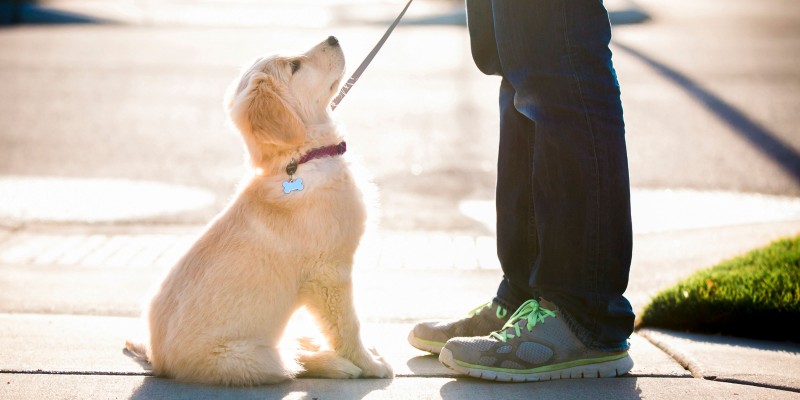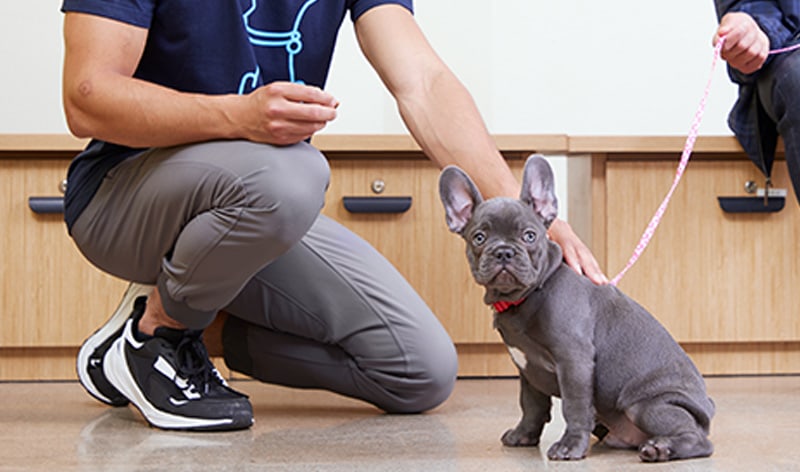Puppy Training Techniques: Teaching Basic Commands for a Happy Pet
Top Pup Educating Methods to Make Certain a Well-Behaved Pet Dog
Efficient pup training is vital for growing a well-behaved buddy, and various methods can dramatically affect a pet's advancement. As we check out these techniques further, it becomes clear that the success of pup training hinges on a combination of techniques that can change your family pet's actions in amazing means.
Positive Reinforcement Methods
Using favorable support methods is important for effective puppy training, as it encourages wanted behaviors with benefits rather than penalty. This technique maximizes the natural learning procedures of pets, strengthening etiquette by offering immediate and tangible benefits, such as treats, praise, or play. By connecting favorable results with details actions, puppies are more probable to repeat those behaviors in the future.
Benefits ought to be given promptly after the desired actions takes place to create a clear connection in the puppy's mind. Furthermore, differing the types of incentives can maintain a pup's interest and motivation throughout the training procedure.

Consistency in Educating Commands
Keeping uniformity in training commands is essential for enhancing the lessons found out with favorable support techniques. Pet dogs grow on routine and predictability, so using the very same verbal commands and hand signals for particular actions is crucial. This harmony assists young puppies recognize what is anticipated of them, reducing confusion and irritation for both the trainer and the family pet.

Timing also plays a substantial function in uniformity. Commands should be supplied without delay throughout training sessions and adhered to instantly by positive reinforcement, such as deals with or appreciation. This immediate feedback aids solidify the organization between the command and the preferred behavior.
Including consistency into training sessions will produce a steady knowing environment, advertising quicker proficiency of commands. Ultimately, a well-structured approach cultivates a strong bond in between the puppy and its proprietor, causing a more obedient and well-behaved pet.
Socializing With Other Pets
Socialization with various other pet dogs is critical for a young puppy's growth, as it helps them find out suitable habits and communication abilities in varied social contexts. Very early interactions with various page pets can dramatically affect a puppy's personality and flexibility in various circumstances. When pups are revealed to a selection of family pets, they come to be a lot more positive and less fearful, which can protect against prospective behavior issues later on in life.

Teach your pup to identify signals from other pets, such as indications of playfulness or pain, promoting shared regard and understanding. Normal socializing not only enhances your young puppy's social skills yet additionally contributes to their general well-being, producing a much more harmonious living atmosphere.
Pet Crate Training Perks
Acknowledging the many benefits of pet crate training can greatly boost both the puppy's and proprietor's experience. Crate training supplies a risk-free and safe and secure atmosphere for young puppies, guaranteeing they feel secured when laid off. This complacency can considerably lower anxiety and stress and anxiety levels for both the proprietor and the animal.
Furthermore, dog crates serve as a beneficial housebreaking tool. Young puppies naturally prevent soiling their resting area, thus motivating them to hold their bladder up until they are allow outdoors. This instinct can accelerate the housebreaking procedure, cultivating excellent routines early on.
When unsupervised,Crate training also assists in taking care of a puppy's actions - puppy training. By providing a designated room, proprietors can stop harmful habits, such as eating on furniture or entering harmful materials. Moreover, dog crates can be valuable throughout traveling, using an acquainted area that can help soothe Discover More Here a young puppy in new environments.
Last but not least, developing a pet crate routine motivates self-reliance, enabling puppies to learn how to be alone without anxiety. On the whole, cage training is an efficient technique for advertising technique, harmony, and safety and security, causing a well-adjusted, well-behaved pet dog.
Leash Training Essentials
Leash training is an essential element of responsible pet ownership that guarantees a enjoyable and risk-free strolling experience for both the puppy and its proprietor. Proper chain training begins early, preferably throughout the young puppy's socializing duration. When out in public., this training helps establish great practices and promotes positive habits.
To begin, pick a comfy collar or harness that fits your puppy well. Affix a sturdy leash, guaranteeing it is not as well long, as this can cause drawing and unpredictable behavior. Beginning in a silent environment to reduce disturbances and gradually present your puppy to new environments.
Use positive reinforcement techniques, such as deals with and praise, to urge your pup to stroll close to you. If your pup draws, stop walking and wait for them to return to your side prior to continuing.
Furthermore, include short training sessions with enjoyable distractions to build your puppy's focus. With commitment and determination, leash training will result in an accommodating friend, making walks satisfying for both the young puppy and the owner.
Conclusion
In final thought, using reliable pup training strategies is essential for establishing a well-behaved family pet. Overall, these methods collectively advertise an unified relationship between young puppies and their proprietors.
As we discover these approaches further, it ends up being clear that the success of young puppy training pivots on a mix of techniques that can transform your animal's behavior in exceptional ways.
Using positive support methods is crucial for effective puppy training, as it encourages wanted behaviors through benefits rather than penalty.Crate training likewise aids in taking care of a puppy's behavior when not being watched.Leash training is a basic facet of responsible pet dog possession that guarantees you could try these out a satisfying and risk-free strolling experience for both the puppy and its proprietor.In conclusion, using efficient pup training methods is important for creating a well-behaved animal.